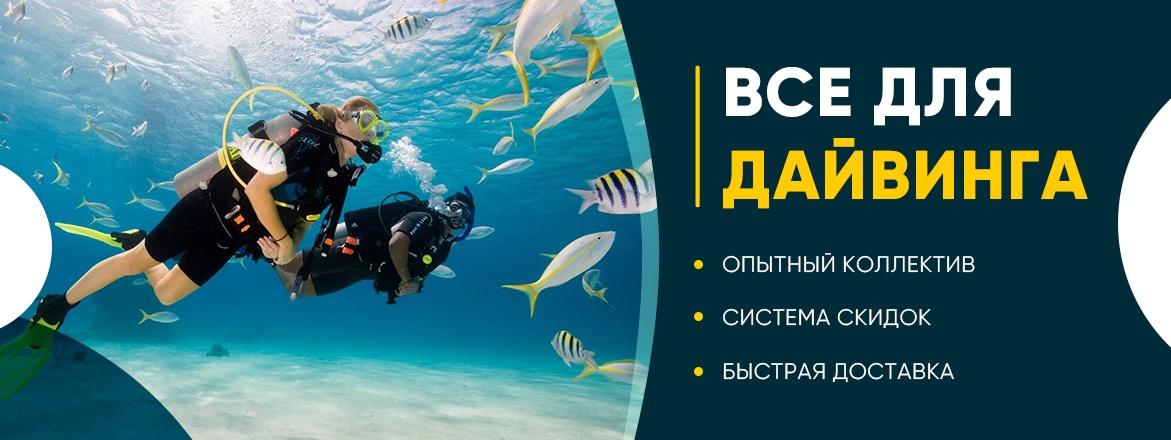Diving:
basic nuances, types and tips for beginners  Automatic translate
Automatic translate
When the holiday period comes, winter or summer holidays, people go on vacation en masse. In winter, it’s nice to visit a warm country, get away a little from the frost and cold, and swim in the sea waves. Due to the development of tourism in our country, diving is becoming increasingly popular. Let’s look at what it is, what types of diving there are, what equipment is needed, as well as some tips on how to practice this hobby competently.
Diving – from English diving this word means “diving”. Simply put, this is a dive into water to a certain depth, say 40 meters, in order to admire the beauty of the underwater world. To successfully pass such a test, you must be prepared to face high pressure below, acquire the skills to move correctly, and also be able to give signals to other divers.

What you need to remember
First, let’s look at some key tips that will help you avoid critical mistakes. Diving deep into water is a dangerous activity, so it must be carried out under the supervision of an instructor. Here are tips that will be useful to everyone:
- Do not be afraid. Fear is a bad advisor in any matter; even with a good instructor, under the influence of fear you can do stupid things;
- You must listen to the instructor unquestioningly and not try to be willful - this is very dangerous;
- Study the design of the scuba tank: where the valve, buoyancy compensator and other things are located. You need to know this in order to act correctly in time;
- You need to carefully study sign language in order to understand what the instructor or other divers want from you.
All these things are important for both beginners and experienced divers.
Diver gestures
Here are the main gestures that deep dive enthusiasts use:
- "Class". Thumbs up means you need to float to the top;
- "Class" down. Thumbs down - let’s dive deeper;
- If there is not enough air, the diver shows it this way: he hits himself on the neck with the edge of his palm;
- A spasm, this also happens, is indicated by a clenched and unclenched fist;
- "Okay" sign. Everything is fine, the dive is going well.
There are other important signs that will come in handy when the water pressure is too high, at any depth, both with an instructor and with friends.
Types of diving
Diving is of the following main types:
- Free diving. People here dive without equipment, simply holding their breath. Every post-Soviet man or guy who caught crayfish in a pond in this way is a free diver;
- Reaction diving. Diving to 10-30 m in order to explore the underwater world, underwater caves , and get aesthetic pleasure;
- Technical diving. Used for scientific study of the underwater world, research;
- Commercial diving. Performed for underwater work: welding, installation of structures, fastenings, etc.
For travelers and vacationers, current reaction diving.
Diver equipment
The equipment includes the following items:
- Valve that prevents reverse flow of water;
- Air cylinder;
- Buoyancy compensator;
- Mask with a snorkel with an anatomical mouthpiece;
- Wetsuit;
- Cargo system and more.
It all depends on the high cost of the equipment, its purpose and level.
Decompression, cylinder checking and other work are carried out under the supervision of an experienced instructor, so that it does not turn out that something is not working before the dive itself. If a mask, snorkel or anything else begins to leak air, you must stop diving immediately.
How to become a professional
To become a great diver, there is only one recipe - to train as much as possible under the supervision of experienced instructors, and also to show as much effort in this direction as possible. If you need the necessary equipment, come in, you can purchase it in the NemoPro store https://nemopro.ru
Only practice and experience, as well as following the advice of people who have already become pros, will help you achieve your goal!
- Woman. Immersion
- The premiere of a large-scale film about strong women "SHE-OCEAN" took place in the "October" cinema center
- “Through the Tunnel” by Doris Lessing
- Graffiti exhibition - street art within the walls of the Museum of Nature and Man
- Provençal city of Grasse (Fountain de la Fu and Notre Dame de Puy Cathedral)